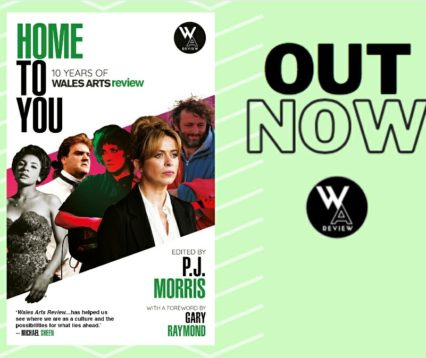David John Roche writes on the process of writing his string quartet – ‘A Prayer at the Edge of Silence’ – after being commissioned by the Solem Quartet.
My name is David John Roche, I’m a Welsh composer based in Cambridge, and I’ve been working on a new string quartet for the fantastic and awesome Solem Quartet. It’s receiving a series of performances on 12th May at Kettle’s Yard in Cambridge, 15th May as part of the Conway Hall Sunday Concerts in London, 27th May at the Tung Auditorium in Liverpool, 12th June as part of the Wooler Arts Summer Series in Northumberland, and 16th July at the Buxton International Festival in Derbyshire. Let me tell you more about my piece, A Prayer at the Edge of Silence, and how I wrote it.
Writing for strings can be intimidating. There are stacks of incredible quartets out there (Sky Macklay’s Many, Many Cadences, Unsuk Chin’s ParaMetaString), there’re loads of amazing pieces available for soloists (Salvatore Sciarrino’s Tre Notturni Brillanti, Kaija Saariaho’s Sept Papillons), and the list of amazing pieces for soloists and orchestra feels endless (Georg Friedrich Haas’ Violin Concerto, John Adams’ Absolute Jest). If you throw the classic repertoire into the mix, there’s an absolute ocean of music out there with ultra-famous quartets, duos, solos, trios, and whatever by almost every composer considered to be part of the canon. There’s a lot of music, much of it has been performed to the highest level, and people really care about it and value it – how do you add to that? Should you try to add to this?
Perhaps not! But responding to something is different to adding to something and, as part of their Beethoven Bartók Now concert series, the Solem Quartet commissioned several composers – including me – to respond to specific themes and specific works by Beethoven and Bartók. For my commission, I was asked to respond to the idea of pioneers. I started my writing by… not writing and, instead, listening to the quartets that would be programmed alongside my new work – Beethoven’s last quartet and Bartók’s first, broadening my listening over time, and making sure I’d been through as many quartets as possible. My main find was that there are so, so many amazing string quartets available – a huge number are considered greats, it is hard to get out of the way of this.
Ultimately, in composing a quartet that responded to the work of composers with an enormous historical weight, I kept returning to one issue – I am not them. What makes many musicians so spectacular, enduring, or captivating is their ability to be themselves so clearly, confidently, and immediately. To be a pioneer in this context is to say something only you could say in a way that only you could say it. To this end, I did my utmost to write in an unbound and unrestricted manner – I wrote music that I love and want to listen to over and over again. It is my hope that, in doing this, I composed something that is clearly me and, hopefully, pioneering in its own regard and on its own terms. I spent a lot of time pushing notes around and binning drafts – I had to do my own thing.
My resulting work, A Prayer at the Edge of Silence, is a 5-movement string quartet about hope. Each movement – each prayer – has a different character and is a meditation on a way of feeling, a wish, or a contemplation. The work is a call for clearer, happier, calmer times ahead.
The first movement is pretty wild and intense, with lots of chugging low strings and bluegrass-style melodic writing in the violins. I labelled the opening with the expression marking of “Somewhere between Haydn and Bluegrass” – thinking specifically of the fast semiquaver writing of the Haydn’s Op. 76, No. 2 and the open string usage familiar to a lot of folk and folk-inspired string playing (including some of the Bartók Duos for Two Violins which I had on my desk while writing). For better or for worse, I also love the music from An American Tail – there’s so much unnecessarily lovely orchestration in this film (the oboe part in this classic is great). I don’t know why, but this film comes to my mind a lot. It had a big influence on the first movement of my quartet and also on my Takemitsu Award nominated orchestral piece Six Prayers, so I won’t shut the door on it!
The second and fourth movements are both built out of a yearning, expressive melody directly repeated 3 times. Each repeat is transposed to a new key, performed slightly faster, and re-harmonised. As the pieces unfurl, they reveal long, yearning, and expressive lyrical lines that build into cathartic climaxes. The second movement yields to a gentler, solemn, quiet prayer (after which the whole work is titled), the fourth movement disappears high into the upper registers of the strings. There’s a mix of influences here from my own piece Prayers of Method (A Vale of Glamorgan Festival Commission), and Christopher Theofanidis’ Rainbow Body (which has a fantastic section for strings about 90 seconds in), to John Tavener’s The Protecting Veil and Thomas Adès Arcadiana (both of which were both on my desk while writing). The Protecting Veil is particularly present as an influence and I love Tavener’s opening expression marking of “Transcendent, with awesome majesty”. Simple stuff, that’s how I play all the time! Practical or not, the expression text conveys buckets of character and this is important to me.
The third movement is fresh and crisp. It reminds me of Britten’s first quartet (his quartets were also on my desk) – but my piece moves around more. Much of this movement is constructed of canonic phrases that rise and fall in waves. These build up to huge quadruple stops and wind out large, quasi-improvisatory figures. This leads to a section of crystalline, quiet harmonics. I was thinking of the very high string parts of Thomas Adès’ Tevot (13:40 in this example – really, really up there). I also like the directness of Philip Glass’ string quartet scores. Clear material immediately up front. I definitely drew on this for movement 3.
The final movement is pretty intense; lots of semiquavers, lots of change, and surprisingly festive (labelled “shamelessly festive” in the score). Like the first movement, I felt like I was drawing on my background in rock and metal music – the piece definitely became something different in the process of writing, however! Shaker Loops by John Adams was an important model for this movement – mainly from a technical standpoint, it can be physically tiring for the performers. The final 100 bars of A Prayer at the Edge of Silence move into some more unusual harmonic areas, with lots of strange and intense rising figures. I particularly like this section and I drew on the feel of the bass line and harmonic movement in Unsuk Chin’s Violin Concerto (right at the opening, here). The music eventually contorts around itself, a homage to the material just before the coda of the first movement in Ravel’s String Quartet (6:45 in this example), the score of which I had for Christmas when I was 17 like an absolute nerd.
A Prayer at the Edge of Silence was a fantastic piece to write. It’s rare to get the chance to write such a substantial piece of music, spend so much time on it, and have it performed so many times by such a fantastic ensemble. I can’t wait to hear it, the Solem Quartet are brilliant, and you should absolutely come and see it!
Solem Quartet David John Roche David John Roche












